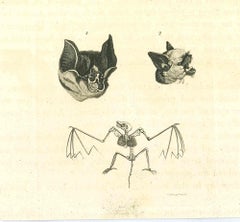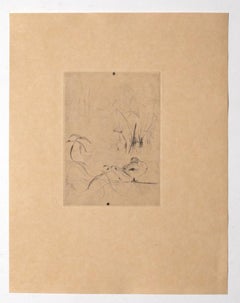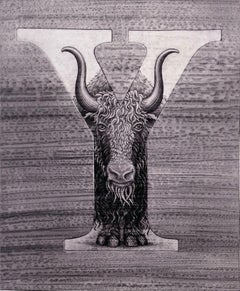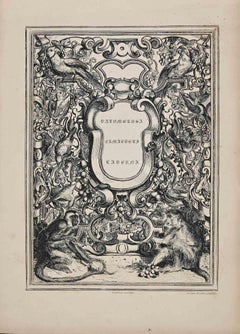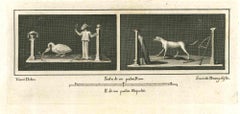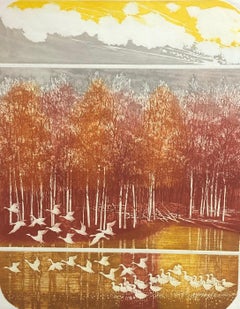Etching Animal Prints
1810s Modern Etching Animal Prints
Etching
Late 19th Century Modern Etching Animal Prints
Etching
2010s Contemporary Etching Animal Prints
Etching, Aquatint
19th Century Modern Etching Animal Prints
Etching
18th Century Old Masters Etching Animal Prints
Etching
Late 20th Century Etching Animal Prints
Etching
21st Century and Contemporary Contemporary Etching Animal Prints
Paper, Etching, Aquatint
Early 1800s Naturalistic Etching Animal Prints
Color, Etching
1960s Abstract Geometric Etching Animal Prints
Etching
Mid-20th Century Surrealist Etching Animal Prints
Etching
21st Century and Contemporary Contemporary Etching Animal Prints
Paper, Etching, Aquatint
21st Century and Contemporary Contemporary Etching Animal Prints
Etching, Aquatint, Screen
1970s Folk Art Etching Animal Prints
Etching
1890s Realist Etching Animal Prints
Etching, Aquatint
Late 19th Century Naturalistic Etching Animal Prints
Etching
1930s American Realist Etching Animal Prints
Etching
1950s American Modern Etching Animal Prints
Etching
1990s Contemporary Etching Animal Prints
Black and White, Etching
1970s Surrealist Etching Animal Prints
Etching
21st Century and Contemporary Contemporary Etching Animal Prints
Paper, Etching
1970s Etching Animal Prints
Etching, Aquatint
2010s Feminist Etching Animal Prints
Paper, Ink, Etching, Watercolor
1970s Surrealist Etching Animal Prints
Etching
1970s Etching Animal Prints
Etching
1830s Victorian Etching Animal Prints
Watercolor, Etching
1970s Etching Animal Prints
Etching, Intaglio
1970s Surrealist Etching Animal Prints
Archival Paper, Etching
21st Century and Contemporary Contemporary Etching Animal Prints
Paper, Etching
1960s Pop Art Etching Animal Prints
Etching
21st Century and Contemporary Contemporary Etching Animal Prints
Etching, Aquatint
1940s Etching Animal Prints
Etching
1960s Surrealist Etching Animal Prints
Etching, Aquatint, Intaglio
1810s Modern Etching Animal Prints
Etching
20th Century Modern Etching Animal Prints
Drypoint, Aquatint
1870s Modern Etching Animal Prints
Drypoint, Etching
1770s Modern Etching Animal Prints
Etching
1770s Modern Etching Animal Prints
Etching
1980s American Realist Etching Animal Prints
Etching
1770s Modern Etching Animal Prints
Etching
1770s Modern Etching Animal Prints
Etching
1770s Modern Etching Animal Prints
Etching
1990s Contemporary Etching Animal Prints
Etching, Aquatint, Lithograph, Screen
20th Century Modern Etching Animal Prints
Drypoint, Aquatint
20th Century Modern Etching Animal Prints
Drypoint, Aquatint
2010s Contemporary Etching Animal Prints
Etching, Aquatint
1980s Contemporary Etching Animal Prints
Etching, Aquatint
2010s Contemporary Etching Animal Prints
Etching, Aquatint
1830s Victorian Etching Animal Prints
Watercolor, Engraving, Aquatint, Intaglio
Late 20th Century Modern Etching Animal Prints
Etching
18th Century Etching Animal Prints
Watercolor, Etching
1970s Modern Etching Animal Prints
Drypoint, Etching
1960s Surrealist Etching Animal Prints
Etching
Late 20th Century American Modern Etching Animal Prints
Handmade Paper, Etching, Aquatint
1830s Victorian Etching Animal Prints
Gold Leaf
1970s Surrealist Etching Animal Prints
Etching
2010s Etching Animal Prints
Etching
1980s Modern Etching Animal Prints
Etching
1980s Modern Etching Animal Prints
Etching
18th Century Etching Animal Prints
Watercolor, Etching
Mid-19th Century French School Etching Animal Prints
Laid Paper, Etching
